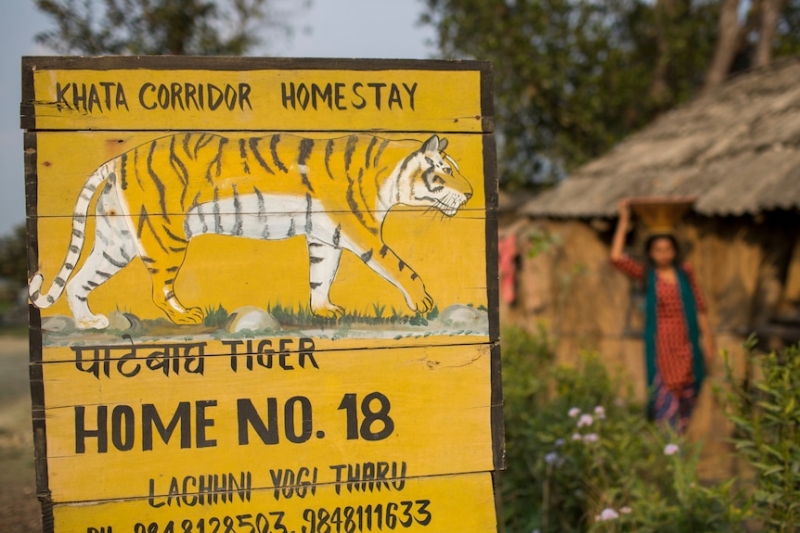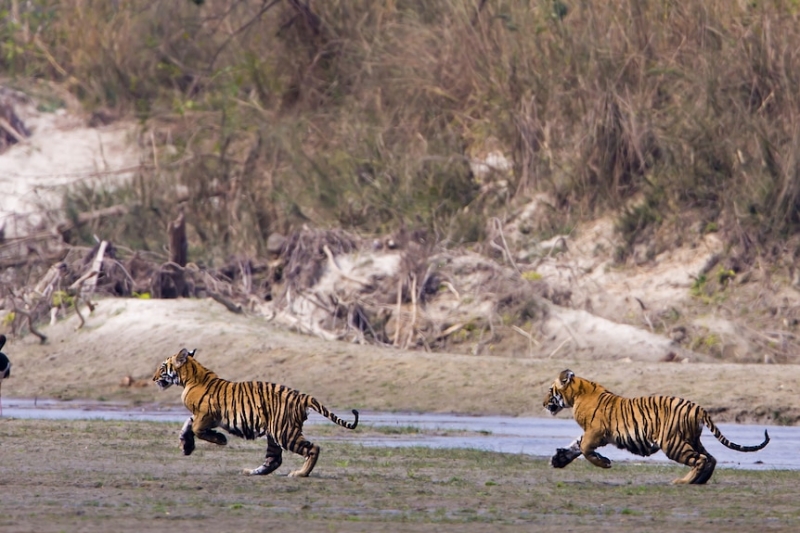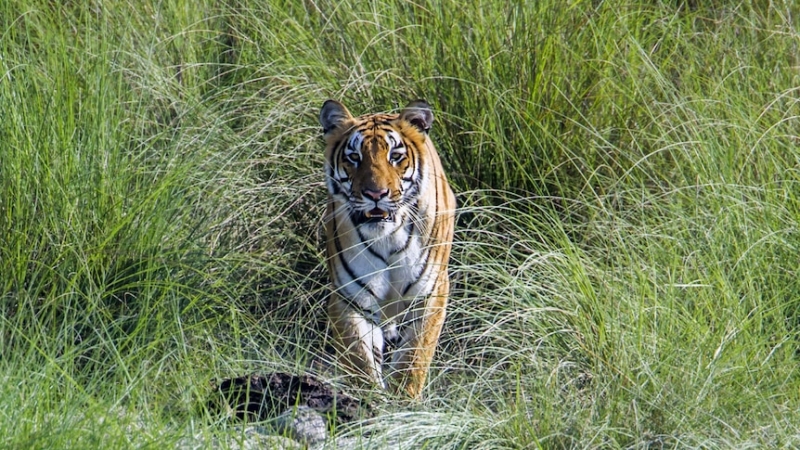In 2010, there were 121 tigers in Nepal. Now there are at least 355. (Supplied: WWF Nepal)
In short:
Nepal's tiger population has tripled in just 12 years, but fatal attacks have prompted the prime minister to call for their numbers to be cut.
He is considering gifting some of the big cats to other countries.
What's next?
Experts say behaviour campaigns and education are essential to humans and tigers peacefully coexisting.
In 2010, Russian President Vladimir Putin and the head of the World Bank convened a small group of Asian leaders in St Petersburg alongside actor Leonardo DiCaprio and supermodel Naomi Campbell.
The unusual group met with a single agenda and left with a concrete resolution: to save tigers from the brink of extinction and double their numbers in the wild by 2022.
The first to achieve this goal was Nepal, doubling then tripling its tiger population to 355, right on schedule.
But in December last year, Nepalese Prime Minister KP Sharma Oli pushed back on the widely celebrated rebound of tigers, saying, "For us, 150 tigers are enough," and suggesting his government may seek to export some of its apex predators to other countries.
"Why not gift tigers to friendly nations?" he said.
"The tiger population should match the available forest area. It's impractical and unwise to protect tigers by endangering human lives."
Too many tigers?
Between 2019 and 2025, more than 60 people died from tiger attacks in Nepal, according to government data.
Deaths peaked at 21 in 2022 — more than any year in the preceding decade.

Humans have lived alongside tigers in Nepal for thousands of years, but habitat degradation has increased the overlap of spaces where they coexist. (Supplied: WWF Nepal)
But advocates and researchers argue a growing death toll is not inevitable if tiger numbers continue to recover.
World Wide Fund for Nature Nepal's Ghana Shyam Gurung said Mr Oli's response was a knee-jerk reaction and an information campaign was needed to promote safer human-tiger interactions.
"Tigers will not change their ways. We need to change our human ways," Dr Gurung told the ABC's The World program.
"People living around the parks need to enter the parks for subsistence livelihoods, so we need to improve their livelihoods so they don't have to enter the parks and can minimise the loss of human lives."
Researchers have identified human activities, including grass collection, cattle grazing and firewood gathering, as the major drivers of encounters with wildlife in the Bardia-Banke complex, one of Nepal's largest tiger conservation zones.

A government-led program restored 66,800 hectares of forest in Nepal, boosting biodiversity and supporting the revival of the tiger population. (Supplied: WWF Nepal)
They say if human-tiger interactions can be better managed, there will be opportunities for economic advantages such as employment in wildlife tourism.
"The capacity is there. We just need to manage the numbers and make sure we benefit from tigers," Dr Gurung said.
"Not only conservation and ecological services, but also wildlife tourism, which is one of the economic drivers of Nepal."
Across the border
India — home to the majority of the world's tigers — also met its 2010 goal to restore tiger populations, counting 3,167 wild tigers in 2022.
But that same year, it crossed another grisly milestone, recording more than 100 human deaths by tiger attacks for the first time, according to India's National Tiger Conservation Authority.
However, those deaths have not prompted pushback from India's political leaders as they have in Nepal, and support for protecting the national animal remains high.
That is despite new research showing that up to 45 per cent of tigers' habitat in India is shared with people.

Nepal's growing tiger population brings with it economic benefits. (Supplied: WWF Nepal)
The research, led by Indian National Academy of Sciences researcher Yadvendradev Jhal, found public attitudes towards the animals and understanding of their economic benefits were essential for the harmonious co-existence of tigers and people.
Mr Jhal said the success of tiger recovery in India offered lessons for other nations with a growing population of the big cat.
"The common belief is that human densities preclude an increase in tiger populations or large carnivore populations," he told the Associated Press.
"What our research shows is that it's not the human density, but the attitude of people which matters more than the density of people.
"And this is reflected in tigers sharing space with over 60 million people in our country."
Evidence appears to show community understanding of how to co-exist may be improving, with both India and Nepal recording fewer deaths from attacks since their 2022 peak.





